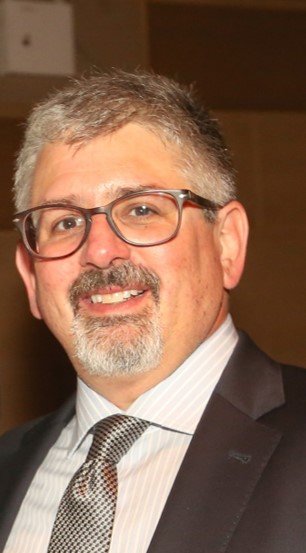Guest Post: Debra of America on Epidermolysis Bullosa
Read about how Debra of America is promoting gene therapy to drive innovative treatments for rare diseases like Epidermolysis Bullosa.

Guest Post: Debra of America on Epidermolysis Bullosa
Read about how Debra of America is promoting gene therapy to drive innovative treatments for rare diseases like Epidermolysis Bullosa.

Guest Post: Debra of America on Epidermolysis Bullosa
 Conversations and healthy debate about issues facing our industry and the health care system are critical to addressing some of today’s challenges and opportunities. The Catalyst welcomes guest contributors, including patients, stakeholders, innovators and others, to share their perspectives and point of view. Views represented here may not be those of PhRMA, though they are no less key to a healthy dialogue on issues in health care today.
Conversations and healthy debate about issues facing our industry and the health care system are critical to addressing some of today’s challenges and opportunities. The Catalyst welcomes guest contributors, including patients, stakeholders, innovators and others, to share their perspectives and point of view. Views represented here may not be those of PhRMA, though they are no less key to a healthy dialogue on issues in health care today.
We are pleased to host a Q&A with Brett Kopelan, executive director for Debra of America.
How are the challenges facing the rare disease community unique in comparison to those facing people with more prevalent illnesses?
The most commonly discussed challenges that the rare disease community face are the lack of return on investment for drug and therapy development and clinical trial recruitment due to a small patient population. Aside from that, a true challenge in many rare diseases is a dearth of interdisciplinary clinics and centers of excellence to not only care for patients but to also collect the necessary data to fully understand the rare condition. While many hospital settings and clinicians are able to treat particular symptoms or secondary illnesses caused by a rare disease, a fully holistic approach to treatment, which leads to a better quality of life, is difficult to develop in one setting as compared to more prevalent illnesses. This fact leads to a real challenge of coordination of care for people with a rare disease. Patients often see a range of medical specialists in different hospital settings which are often in different states. Given this reality, there is an inability to effectively develop and widely disseminate information and care trends that lead to the development of clinical best practice guidelines. The unfortunate lack of institutional knowledge and experience in treating rare diseases holistically results in little understanding of the natural history of a disease and expected outcomes. So when an individual is diagnosed with a rare disease, there is often little information about it available or what information exists is often anxiety provoking. While living with any disease, prevalent or not, is difficult and presents many challenges, those with a rare disease have the unique challenge of coordinating effective care. Finding local clinicians with experience in the disease is a challenge in and of itself. Furthermore, there is an undue financial hardship incurred by traveling great distances to receive care. For instance, my family travels from the suburbs of New York City to Cincinnati, Ohio every three to four months for clinic visits and surgeries. If we lived with a more prevalent disease, we could drive fifteen minutes to any one of the amazing hospitals we have here in New York.
Given the theme of this year’s Rare Disease Day is research, is there any specific research currently underway into new medicines for people with rare diseases that you’re particularly excited about?
The most exciting aspect of current research is the number of avenues being pursued for local and systemic therapies. Many people, including me, see gene therapy, gene editing and gene transfer initiatives that have shown early promise, very exciting. Platforms like exon skipping is also incredible promising. These initiatives and platforms may be applicable to any number of diseases and that in itself is cause for excitement. In our disease state, Epidermolysis Bullosa, there a number of industry sponsors that are developing therapies from varying scientific angles. One company has developed an off the shelf gene which they insert into a cell which would then be injected in an area of skin with a chronic wound. Another initiative, involves a gene transfer into a cell, resulting in that cell’s ability to produce the missing protein. Daughter cells are then turned into skin cells which are then grafted onto non-healing wounds. We also have biotechnology companies investigating therapies delivered topically. All are exciting and make Star Trek look 18th century.
Are there any examples of progress in the fight against rare diseases in recent years that have inspired you in your work?
The continuously evolving public/private partnerships demonstrate incredible progress and have influenced much of our advocacy work. The passage of the 21st Century Cures Act along with the Rare Pediatric Disease Priority Review Voucher Program builds upon and enhances the Orphan Drug Act and these are a gigantic step forward for rare diseases. Furthermore, the authorization of the Patient-Centered Outcomes Research Institute by Congress in 2010 was another example of real progress. But most importantly, the newer paradigm of biotechnology and pharmaceutical companies engaging early and often with patient advocacy groups in drug development is inspiring. These developments have led to some truly inspiring outcomes in our disease state. Five years ago, there was little industry involvement in Epidermolysis Bullosa. We now have eight industry sponsors developing therapies. This could not have happened without the current legislative environment.
What do you want people to know about people with rare diseases and the challenges they face?Learn more at: www.debra.org.